“Remote corners of Patagonia, wildlife and Jurassic volcanic landscapes that took the breath away of the father of the theory of the evolution of species, Charles Darwin. Pingüino Island, Deseado River and the surroundings of Puerto Deseado invite you to take hundreds of photos and connect with the marine nature of Patagonia. It is worth discovering why this site is called the Galapagos of Patagonia.” ARGENTINA WILD EXPEDITIONS.
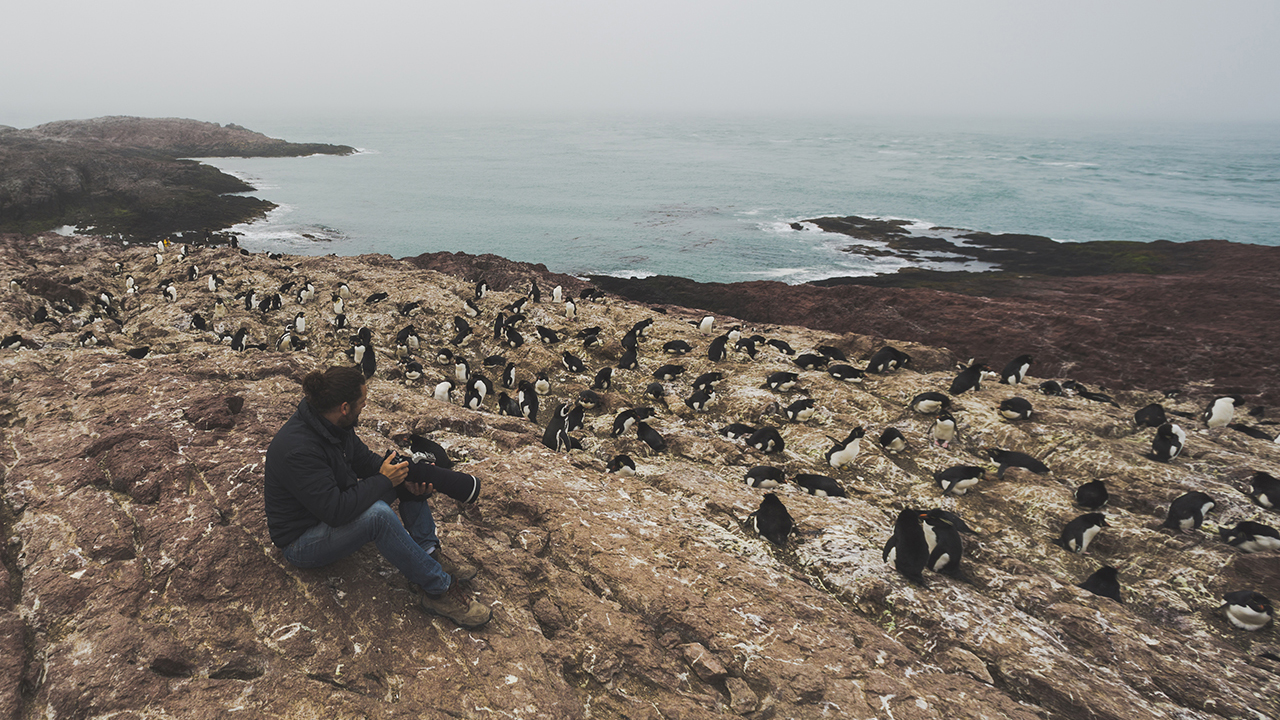
Puerto Deseado is a small town and fishing port in Patagonia, in the province of Santa Cruz, Patagonia Argentina, on the north shore of the Deseado River. This tidal river is a beautiful 42km-long estuary, with a great variety of marine fauna, islands, canyons, coves and landscapes excellent for photography. Puerto Deseado is also the starting point to visit the ‘Pingüino Island’ Interjurisdictional Marine Park and the ‘Cabo Blanco’ Nature Reserve.
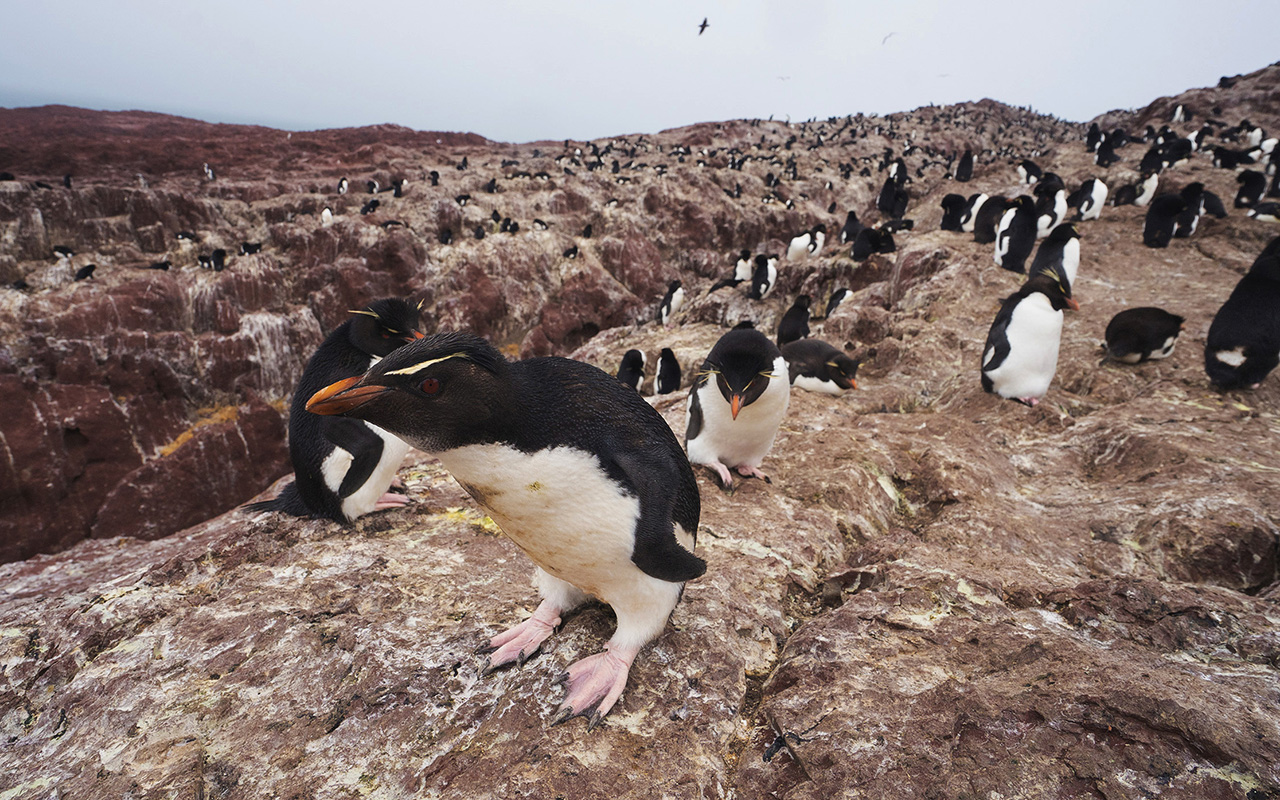
From Puerto Deseado we will sail to the magnificent Pingüino Island, home to the only accessible colony of Southern rockhopper penguin in Argentina.
After an hour of navigation in the open waters of the Argentine Sea and after photographing species of dolphins and seabirds during the trip, we will arrive at the fantastic Pingüino Island, located 21 km southeast of Puerto Deseado. It was declared a Marine Park because it is one of the sites with the greatest marine biodiversity in Patagonia. It is a place where, without a doubt, we will take hundreds of photographs.
On the island, we will observe a Magellanic Penguin colony and the only accessible colony of Southern rockhopper penguin on the Patagonian coast. Flying over the island at low altitude and looking for penguin eggs and chicks, we will find skuas (Chilean skuas, Antarctic skuas and presumed hybrid individuals), gulls and petrels. We will also find a colony of sea lions, some Southern elephant seals mixed with the sea lions, terns, cormorants, and other species of seabirds. In addition, there is the historic abandoned lighthouse and the ruins of the old sea lion factory from the end of the 18th century.
During the round-trip to Pingüino Island, we will have the chance of seeing the Peale’s dolphins and Commerson’s dolphins (one of the smallest marine dolphins in the world), as well as birds such as albatross, petrels, cormorants and terns.
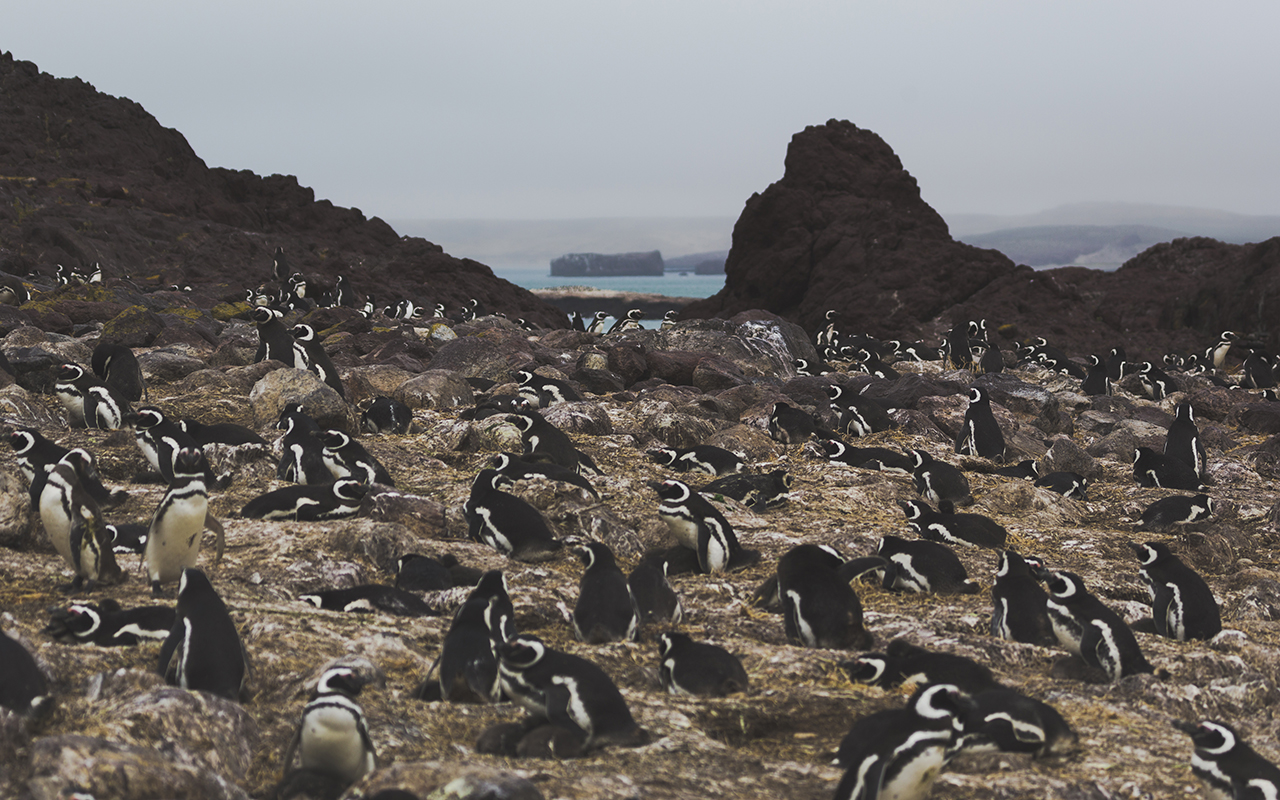
The Deseado River Nature Reserve is another great attraction of this destination. It invites us to navigate in a rocky Jurassic landscape which is home to a lot of marine fauna. Navigating among islands and channels, we set out to look for “the pandas of the sea”, the friendly Commerson’s dolphins, which can be seen very close to the boat along with presumably hybrid individuals resulting from Commerson’s dolphins and Peale’s dolphins.
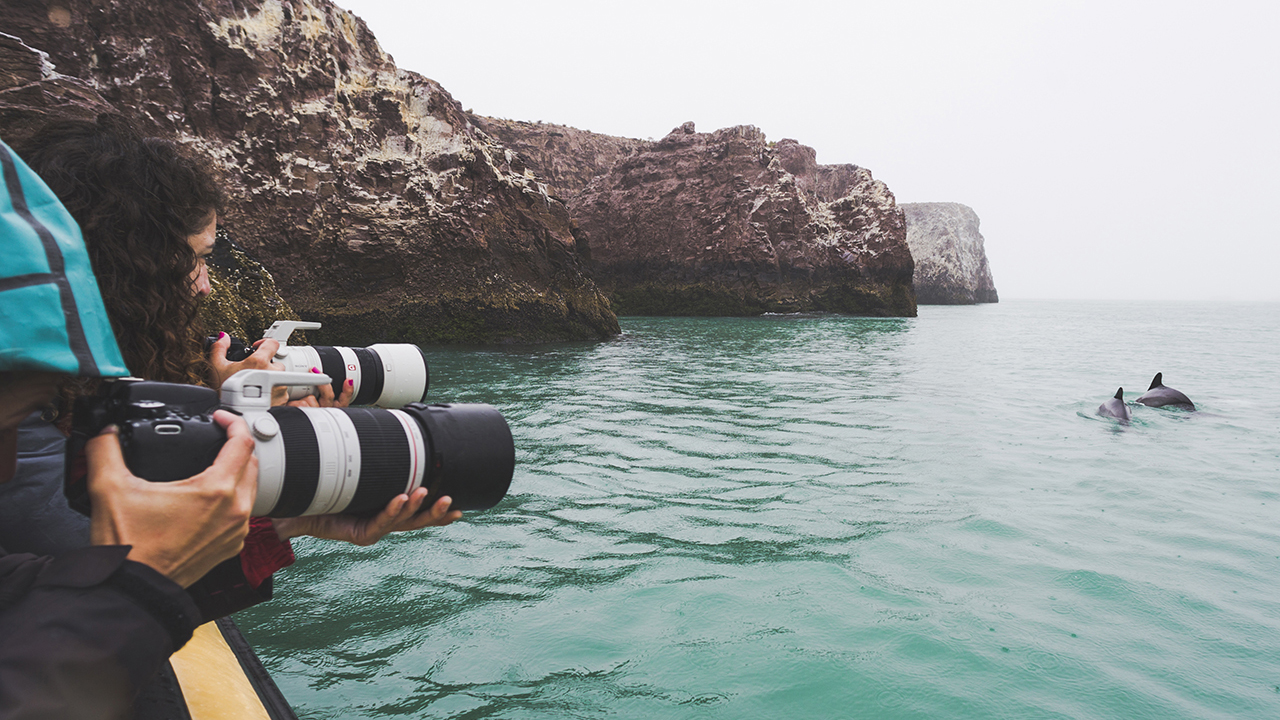
Another target species of the destination is the Red-legged cormorant, one of the most beautiful cormorant on earth. We will visit their nesting sites on the walls of the tidal river. There are other species sharing the habitat in this inhospitable place, such as the Magellanic cormorant. It is also the nesting site for the Dolphin gull, Snowy sheathbill, terns and skuas and the breeding ground of the sea lions.
Within the Deseado tidal river, we will disembark on the De los Pájaros Island, which is home to a colony of more than 30,000 Magellanic penguins. We will take a short, guided walk along the river stone beach; it will allow us to contemplate and photograph the penguins up close.
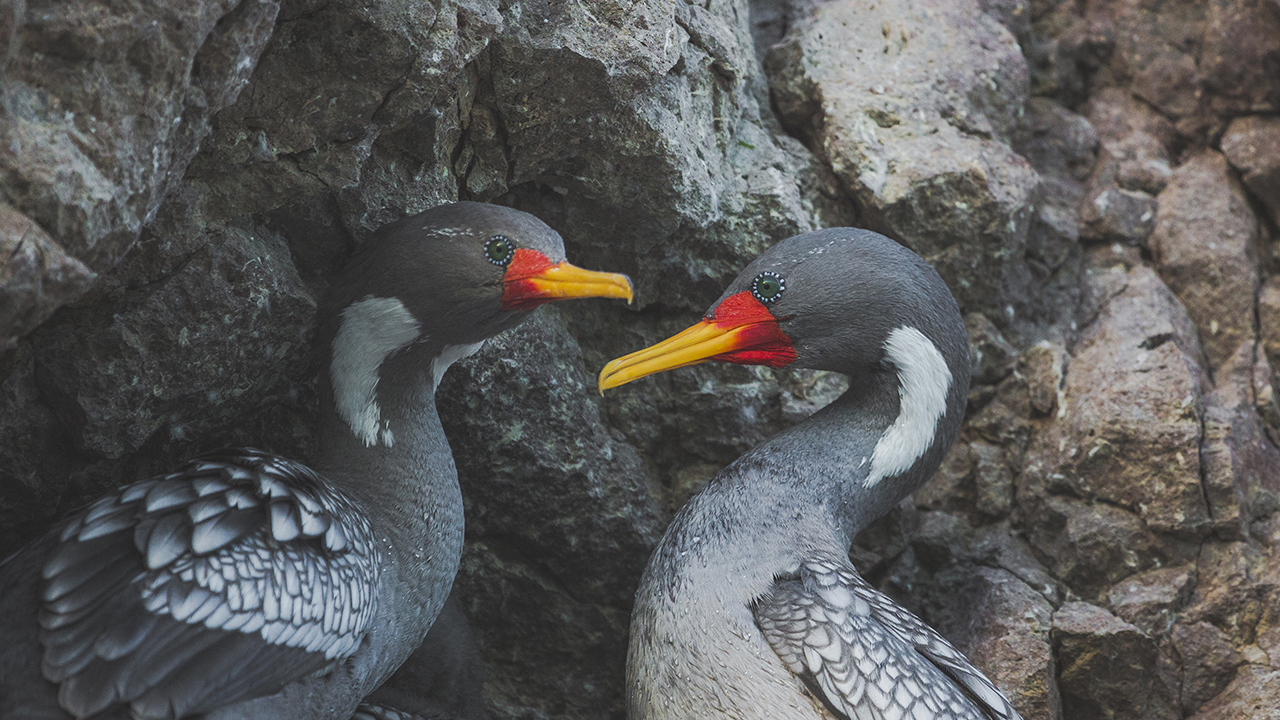
We will travel along the south coast of the river by land, observing the fauna characteristic of the Patagonian steppe, visiting the ranches in the area which raise sheep, until we reach the Darwin lookouts. Going down a small canyon, we will get to the site where the english naturalist Charles Darwin’s expedition camp was set up in 1833. After a walk, we will reach a small cave with 7,000-year-old paintings.
Later, we will ascend to the Darwin lookouts to contemplate the spectacular panoramic view of the Deseado river canyon.
“I have never seen a place further from the rest of the world than this rock crevice in the middle of the immense plain” Charles Darwin
90 km from Puerto Deseado, we will find a rocky promontory that leads to the Cabo Blanco Intangible Nature Reserve since 1937. It was named by Hernando de Magallanes. This site offers an incredible marine landscape with colonies of Red-legged, Imperial and Magellanic cormorants, southern sea lions and south american fur seals.
The outcrops of Cabo Blanco contain important mussel banks and other mollusc species which are the food of various species of seabirds. Moreover, there is evidence of the presence of aborigines in the cape, since bolas, fishhooks, bone harpoons and arrowheads were found. From the Cabo Blanco Lighthouse, there is a magnificent panoramic view of this natural reservoir.
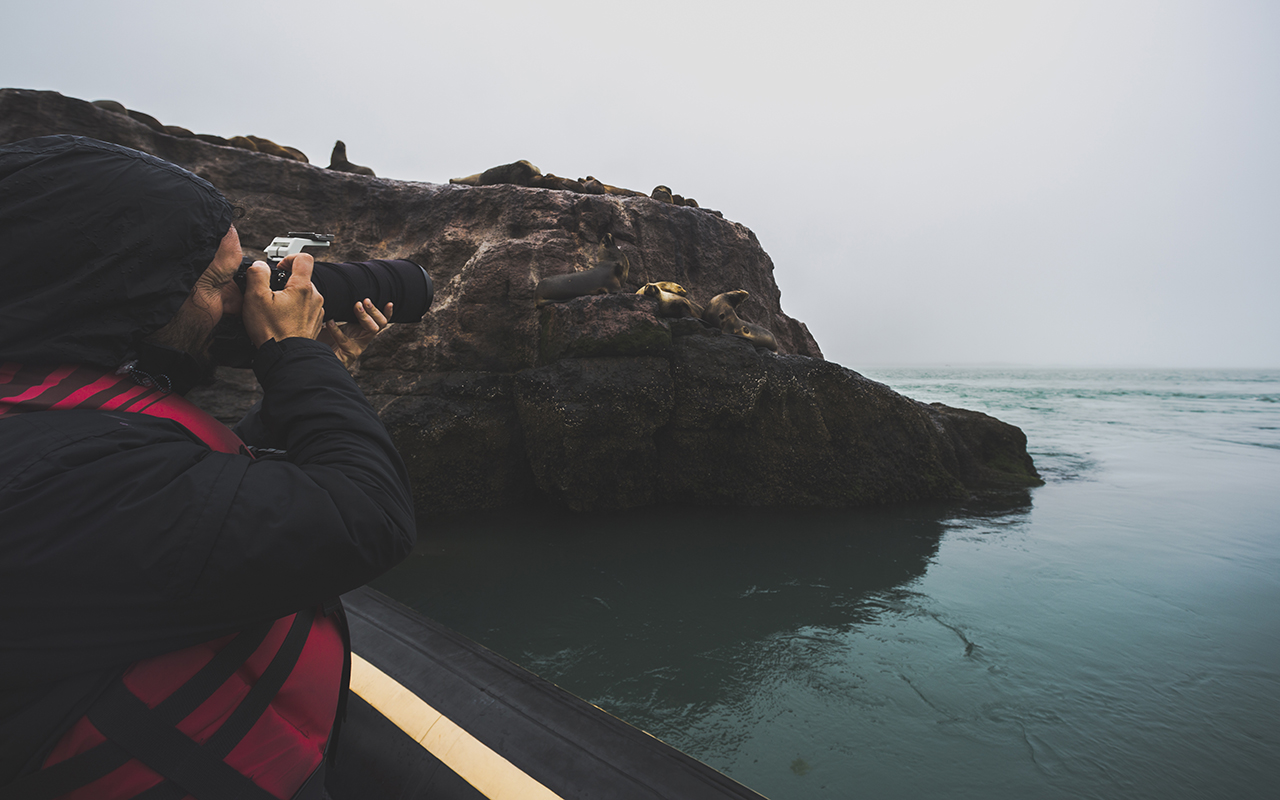
Target species: Southern rockhopper penguin, Magellanic penguin, red-legged cormorant, Commerson’s dolphin, Peale’s dolphin, Patagonian grey fox, Magellanic cormorant, Imperial cormorant, South American tern, Royal tern, Sandwich tern, Chilean skua, Antarctic skua, Black-browed albatross, Southern giant petrel, Northern giant petrel, Blackish oystercatcher, Magellanic oystercatcher, American oystercatcher, Magellanic-horned owl, Southern sea lion and South American fur seal, among others.
See Checklist of species in EcoRegistros:
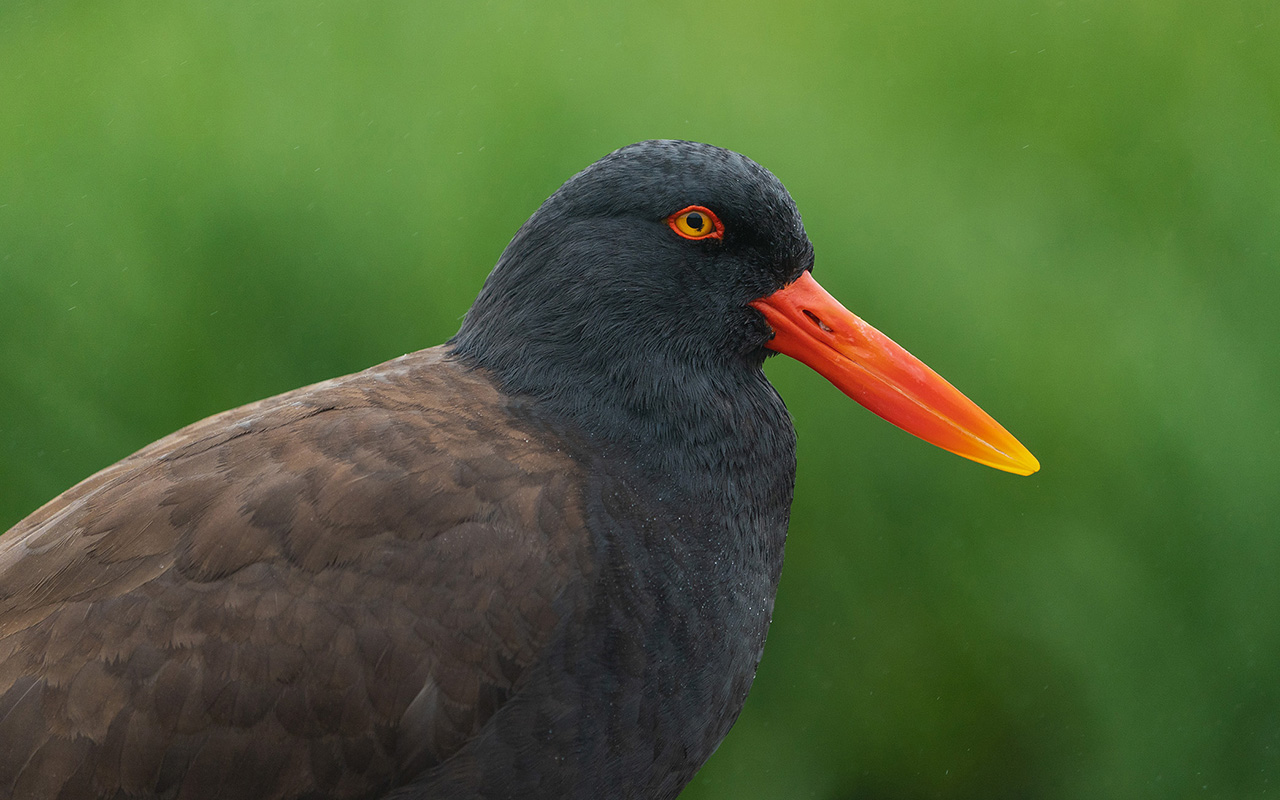
Season: September to march
Recommended minimum duration: 4 days
Base: Hotel in Puerto Deseado
Air terminal: Enrique Mosconi International Airport (CRD), Comodoro Rivadavia, Chubut.
Approximate sunrise and sunset times for the nestling season:
Sunrise: 5:20 pm
Sunset: 9:10 am
The maximum temperatures can reach 27°C (80°F) and the minimum 6°C (43°F).
